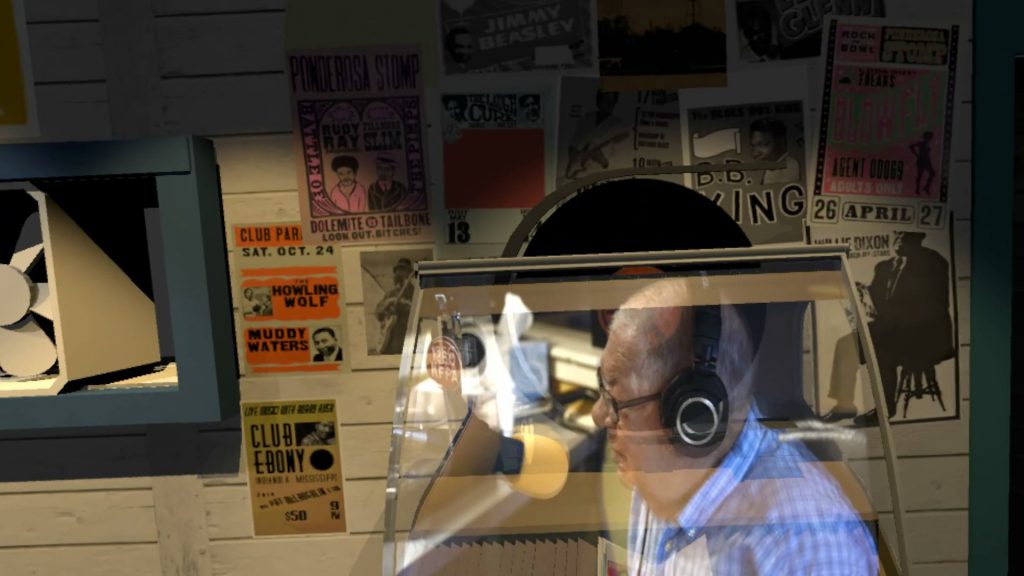VR - Immersive Reality Lab


Milieux is now home to the Immersive Reality Lab, Concordia’s only cross disciplinary virtual reality and Immersive storytelling lab. Led by VR technologist and filmmaker Marco Luna, the lab is open to Concordia students and faculty members affiliated to Milieux wishing to integrate VR elements in their research creation projects. Located at the Post Image cluster, the Immersive Reality lab hosts workshops and mentoring sessions in VR development regularly helping to create a gathering space for the VR creation community at the university.
In 2015 Film Production Professor and Documentary filmmakers Daniel Cross and Marco Luna from the Mel Hoppenheim School of Cinema created the Concordia University Research Chair in Interactive Documentary Filmmaking. The goal was to explore the different uses of new technologies highlighting cinematic documentary narratives and user interfaces. Through this research chair a documentary lab was established and students from different departments joined forces to research the evolving approaches and technological capabilities towards making documentary narratives. This inclusive research-creation methodology evolved as it outreached to other areas, institutes, research clusters in the Concordia community and abroad participating in the creation of a virtual-reality/Immersive research-creation community. Due to the teaching/mentoring activities and their research-creation production capacities the lab joined forces in 2018 with the Post Image Cluster at Milieux. Then in 2019 Milieux institute for arts, culture and technology asked them to open the immersive reality lab and as a result they blended their equipment and teams together into our existing lab area, beefing up presence, hours and capabilities to better support research-creation activities.
Dark Matter
CART students Yasmin Roy and Benjamin Delorme finished their independent study journey with their version 1.1 of their VR documentary project. Dark Matter is designed to expose people to environmentally devastated areas in Canada that would be otherwise untraversed and unknown. It is also designed to educate individuals on the realities and consequences of expanding tar sands extraction projects, including political, economic and environmental aspects. Exploring the surroundings will activate progressive degradation of the environment as the spectator is immersed in the experience. The use of audio clips and visual cues, such as newspapers, will guide the viewer in further understanding the significant environmental impact of developing tar sands projects.

Out of my room
This co-creation project is directed by VR documentary maker Marco Luna in collaboration with Cedirc Caron, a cystic fibrosis patient at the St.Justine Hospital and Concordia animation student Dion Wang. Out of my room is the first episode of a series of short virtual reality pieces created by young patients at their isolated stay in the hospital. Each piece is a collage of the espaces they would like to be and people they want to be with instead of being in isolation. The vr headset becomes the excuse to extend the physical space without boundaries. In this first project Cedric wants to be inside a gangster film populated by iconic film characters and members of his family and hospital staff. All production done in his hospital room.

Volumetric Island
Developed by visual artist and INDI PHD candidate Olivia Mc Gilchrist, VOLUMETRIC ISLAND will disrupt conventional uses of volumetric capture to portray a gestural response to a virtual experience of being in water. I will explore the affordance of a high-end volumetric rig to capture myself and other participants experiencing an updated version of my VR project MYRa (2018-ongoing). MYRa combines digital underwater worlds with performance art. After filming myself along the coast of northern Québec in 360 videos, I edited and overlaid this with videos of several bodies of water (ocean, lake, river). I then programmed effects with shaders in video game engine Unity 3D to transform these videos into the final artwork. In the next version, I aim to offer viewers two forms of engagement where virtual immersion is related to the experience of being in water. Viewers will be able to navigate between virtual islands or remain still amidst a virtual tidal wave; exploring “submersion” as an alternative notion to describe VR’s immersive experience.
I AM THE BLUES
Developed by professor Daniel Cross and Marco Luna from the cinema department. This virtual reality documentary piece revisits the footage shot for the documentary film I AM THE BLUES and provides an augmented experience in VR. The film was about the last remaining blues musicians who working in the cotton fields learned the blues. Mainly in their 80’s and still living in Louisiana and Mississippi, these musicians have a world of experience etched on their beautiful faces. The sparkle in their eyes is as rich and beautiful as the music they play, and as documentary filmmakers that's where we find immersion. But What happens when we change the medium? Through a mix of 2D footage and 3D environments the project takes you into a journey of discovering the root of the blues from the Mississippi cotton field plantations to the Tutwiler train station where the blues was discovered to finally let you settle inside the most iconic jukejoint from Bentonia, the Blue Front Cafe.


